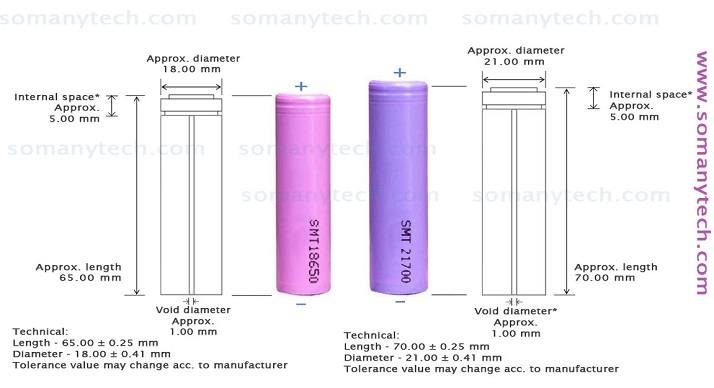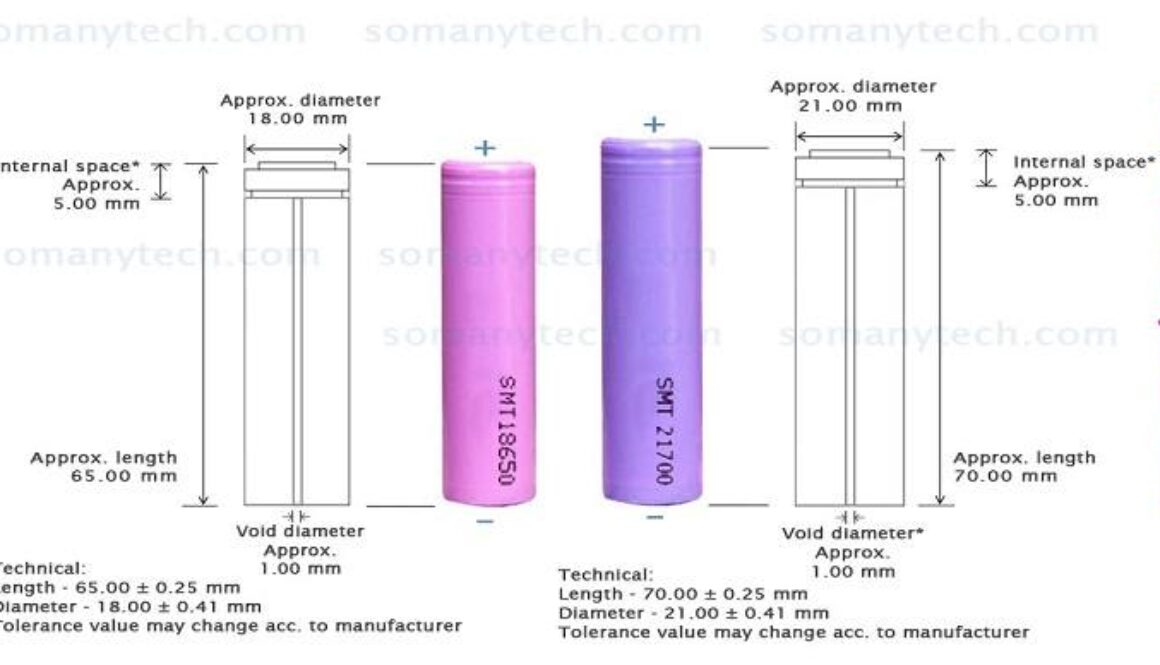21700 vs 18650 Battery Size & Technical Comparisons
Along with the comparison of 21700 vs 18650 battery, this post article will elaborate on the area of application, similarity, and the difference between these batteries in detail.If you would like to purchase either a 18650 lithium battery or a 21700 battery as a substitute, then please read the information mentioned below. In most cases, people search for a 21700 battery vs 18650 because they wish to use these batteries in their projects or products and are trying to figure out which one would be the best fit for them.
This product could be electric vehicles such as bikes, mopeds, or cars, various industrial appliances or utility tools like drills and cutting machines, torch lamps, and so on.
The other reason you are searching for this information could be, ‘you are thinking to replace a 21700 battery with a 18650 battery or vice-versa’ in the devices you already have like torchlight, toys, or portable devices.
Below image showing length and diameter of 21700 vs 18650 battery:

Q. Can 18650 be used for 21700?
A. The 21700 batteries are bigger than 18650 battery so they can’t be used instead of each other. Check above image for size difference. There is an exception that, if there is an extra space in the device and battery is directly connected (without a battery holder), then they can replace each-other.
21700 vs 18650 battery which one is better?
The choice between a 21700 and 18650 battery depends on your specific requirements and the intended application. Both battery types have their own advantages and considerations. 21700 batteries have higher capacity and higher energy density as compared to the 18650 batteries. This means that 21700 cells can store more energy and provide longer operating hours.
The 18650 batteries have been widely used for many years and widely available, offering good performance for a variety of applications, including laptops, power tools, and many consumer electronics.
The 18650 vs 21700 battery looking at its properties and applications in context:
| Specification | 21700 cell | 18650 cell | Remark |
|---|---|---|---|
| Technology | Lithium-ion | Lithium-ion | - |
| Dimension | 21mm × 70mm | 18mm × 65mm | dd×hh |
| Height | 70 mm | 65 mm | (length) |
| Width | 21 mm | 18 mm | (diameter) |
| Capacity | 3400mAh to 5600mAh | up to 3500mAh | - |
| Energy density | up to 300WH/kg | up to 250Wh/kg | - |
| Output voltage | 3.7 V | 3.7 V | Nominal |
| Output current | ~36 Amps | ~25 Amps | Maximum drain current |
| Net weight | 30 to 55 gms | 55 to 75 gms | * |
| Efficiency | slightly lower | higher | At max. current |
| Cost-effectiveness | costlier | cheaper | - |
* The extended range in some of the parameters is there because the battery with the same size can have different capacities and different specifications. Due to the technology and various application purposes like consumer application and the industrial application, there requires a high drain battery with larger capacity as well as a high efficient battery with lower cost thus, lower capacity. There is currently no lab performed experimental results available in forums/ communities which are directly comparing the standard 18650 and the new 21700 formats.
All the information in the above table is taken into consideration after comparing various datasheets of several lithium batteries of each type so that, we could reach a particular point in comparison.
Let’s compare some of the main parameter in depth:
- The 18650 battery and 21700 battery are having the same or similar applications in all the domestic and industrial sectors. However, one is smaller in size and capacity than the other one. Thinking, the 21700 battery is slightly larger thus providing more power for a longer duration.
- 21700 battery indicates the size of 21 mm × 70 mm (diameter×length).
18650 battery indicates the size of 18 mm × 50 mm (diameter×length).
whereas, ‘0’ at the last indicates its cylindrical shape. - Theoretically, when seen from the dimension of 18650, it has the volume 16532 cubic mm. Similarly, a cylindrical 21700 battery has a total volume of 24233 cubic mm. Therefore, theoretically a difference of ~47% of volume.
- If seen practically you can say that about 35-38% of volume is available for the actual cell inside after the remaining about 10-12% of the volume is used to incorporate or fit the extra thing like internal protection circuit, anode-cathode connections, etc.
Nearly 35 to 38% of extra volumetric space goes with a 21700 battery with respective to 18650 cells.
As we know that with the same technology and same material we can increase the capacity of Lithium-ion batteries by increasing their size, eventually the volume.
By doing so, the capacity of 21700 batteries can be made more than 35% higher than that of a common 18650 lithium-ion battery. The 18650 battery is available from about 1200mAh to 3500 mAh capacity. Also, the capacity of 21700 batteries has a capacity from 3400 mAh to 5600mAh. (see above the table of comparison)
21700 battery vs 18650 Area of Applications:
- Consumer electronics devices like emergency power light, portable multimedia players and bluetooth speakers are powered with 18650 lithium batteries. But eBike, electric vehicles are using both 21700 and 18650 batteries to power them.
- 18650 can be found in portable devices like satellite phones, remote control toys and controllers.
- Medical diagnostic instruments, Medical UPS systems, Motorized wheelchairs commonly use 21700 cells.
- There are lots of applications where these cylindrical lithium batteries are used due to their high drain current and large capacity. 21700 battery made it practically possible to design very common industrial instruments like drilling, cutting and grinding with portability.
Both 18650 battery and 21700 battery over the time period proved to be highly reliable and performance-wise stable. From the energy density to the output power, the performance of the 21700 batteries has been greatly improved over those of 18650 batteries.
Although 18650 is still popular in most industries, one of the reasons new tech industries are choosing 21700 cells is due to its longer battery life and higher rated output current.
For electro-chemical and thermal properties, check this 18650 vs 21700.

